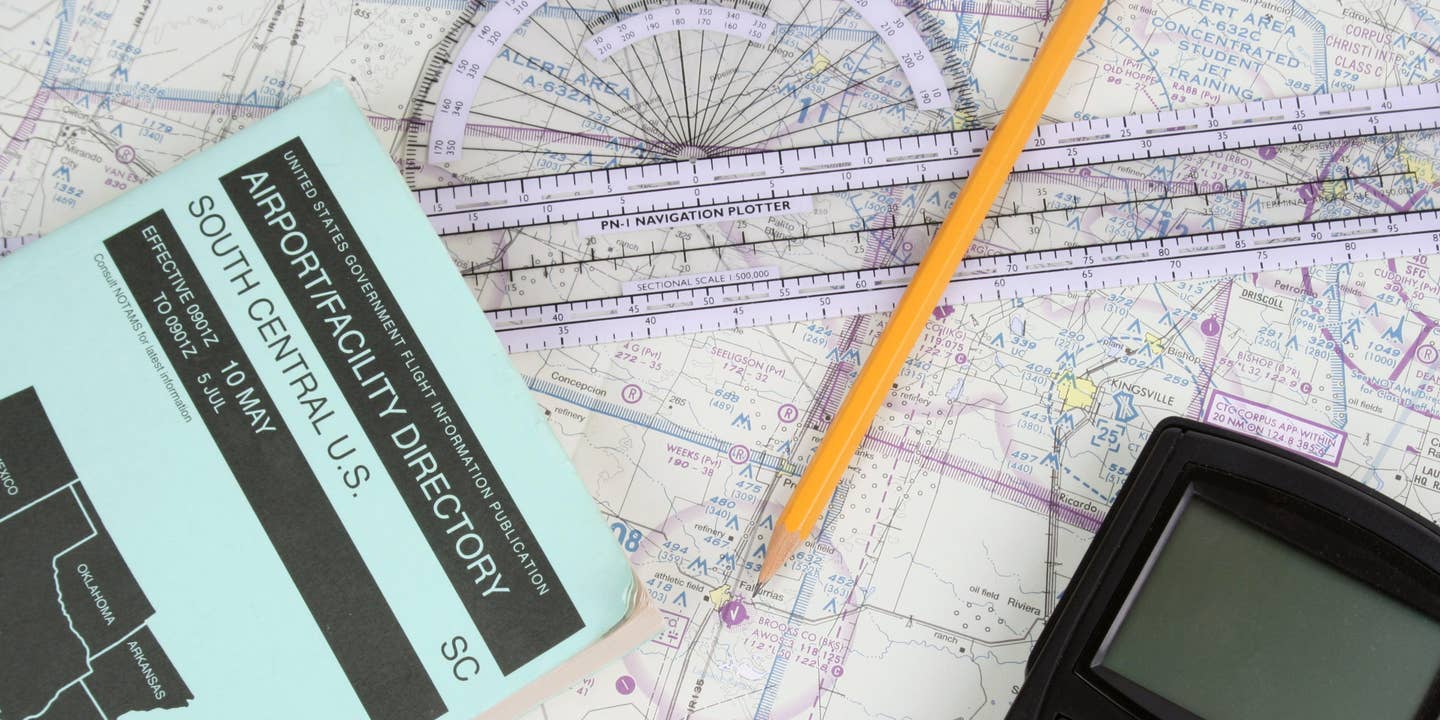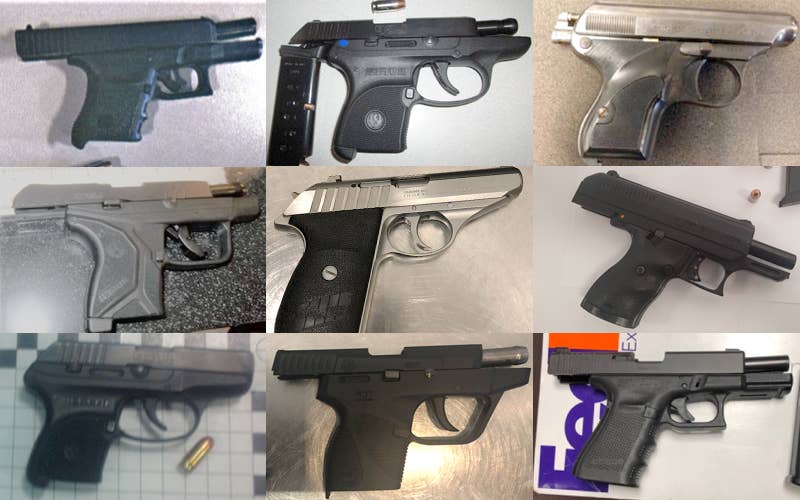
Sectional charts are the most commonly used charts by pilots today and provide a wide range of valuable information. [Credit: CanvaPro]
Sectional charts - the most commonly used charts by pilots today - provide a wide range of valuable and necessary information for all types of pilots as well as UAS operators. These navigational aids have been around since 1930 - but don’t think of using anything other than a current chart to navigate. In the United States, the full lower 48 states have been available since 1937. Sectional charts are designed for navigation under visual flight rules (VFR).
For student pilots, sectional charts can feel overwhelming and unfamiliar. Today’s article will review the types of VFR sectional charts available, how they work, and some of the important features pilots should know and recognize.
How Does a Sectional Chart Work?
Sectional charts are a navigational aid - but they are not maps. New student pilots may not be familiar with the difference between charts and maps. Traditionally, road maps emphasize landforms and represent topographical information.
While an argument can be made that charts are a type of map, charts provide additional information for users. For example, aviation charts show airspace information and ground based navigation aids, and nautical charts show water depths and seafloor consistency.
What Is the Scale of Sectional Charts?
The scale of FAA sectional charts is 1:500,000 - or 6.86 miles per inch of the chart. A standard scale of sectional, WAC, TAC Scale with nautical and statute mile delineations accommodate plotters used to determine flight distances, true course, distances between checkpoints, or waypoints.
Types of Charts
There are three primary types of aeronautical charts used for VFR navigation. All three types of charts may be referred to as sectional charts, but this is not completely accurate. Private pilot candidates should understand the difference between the three types of sectional charts:
- VFR Terminal Area Charts
Terminal Area charts or TAC (may be pronounced like “tack”) charts are the most detailed Chart available from the FAA for navigation, scaled at 1:250,000 (vs the 1:500,000 scale for sectional charts). TAC charts do not cover the entire country. They are available in select areas - primarily around areas of Class B and Class C airspace. There are 30 different TAC charts available from the FAA which provide detailed depictions of major cities including Atlanta, Charlotte, Dallas/Fort Worth, Las Vegas, Los Angeles, Miami, Salt Lake City, and San Diego.
- Sectional Charts
Sectional charts, or simply “sectionals” cover a grid of the entire country. These charts highlight terrain and obstacles and emphasize topographical information and visual checkpoints. They also provide pilots with radio frequencies for communication and weather, visual references for military training routes and areas, and airport information such as runway length and traffic pattern information. Restricted areas and special use airspaces are displayed, which is especially helpful for cross-country flight planning.
- World Aeronautical Charts
World Aeronautical Charts (WACs) have the largest scale (1:1,000,000) and cover an area of 13.7 nautical miles per inch of map. The FAA specifically says that because some information is not shown on WAC charts, [they] “are not recommended for exclusive use by pilots of low speed, low altitude aircraft.”
The key difference between sectional charts, TAC charts, and WAC charts, is the scale size and amount of detail on the chart. Sectional charts and VFR TAC are generally revised every six months.
WAC charts are revised and updated annually, except for a select few charts in Alaska, Mexico, and the Caribbean that are revised biennially. The Chart Supplement U.S. also provides a resource for pilots to update visual charts between edition dates (The Chart Supplement U.S. is published every 56 days.)
Where Can You Find Sectional Charts?
Aeronautical charts are available at many pilot shops and at many online aviation stores. If you are purchasing a chart for an upcoming practical test, make sure it will be current for your test date.
Although charts are available in electronic flight bags (EFB) apps like Foreflight and Garmin Pilot, private pilot applicants should bring a paper sectional chart (and TAC chart, if applicable) to any check ride. Visit the DOLE (date of latest edition) site to check the latest publication date.
Some retailers also provide subscriptions, allowing operators to automatically receive new charts as they are released.
How to Read a Sectional Chart?
The Pilot's Handbook of Aeronautical Knowledge (PHAK)’s chapters on Navigation and Airspace are an excellent starting point for understanding how to read a sectional chart. For new pilots, rusty pilots, or anyone needing a refresher, the FAA’s Aeronautical Chart Users' Guide is a useful tool for learning and reviewing symbols on the information.
Using the Legend
The sectional chart legend portrays aeronautical symbols with a simple description of what each symbol depicts. Topographic information on VFR aeronautical charts identifies major railroads, roads, shorelines, lakes, reservoirs, streams, and miscellaneous culture features.
Many of the symbols are identical or very similar on TAC charts, sectionals, and WAC charts.
Latitude and Longitude
Specific geographical points can be located and identified by reference to longitude and latitude. By referencing meridians of longitude and parallels of latitude, positions may be accurately located using the grid system.
Sectional chart quadrants divide each 30 minutes of latitude and each 30 minutes of longitude.
Airports and Airport Information
Civilian and military airports are identified on sectional charts, with different symbols for hard-surfaced runways, other-than hard-surfaced runways, and seaplane bases along with whether these airports offer services such as fuel and maintenance.
Restricted, abandoned, unverified, and objectionable airports and landing areas are identified for purposes of emergency landings.
Terrain and Obstacles
Elevations are a critical part of flight planning, especially avoiding flight into terrain and obstacles. Charts also depict city areas and towns, congested and populated areas (shaded yellow to aid in recognition at night) , shaded relief, and drainage areas (canals and irrigation ditches).
Controlled Vs. Uncontrolled Vs. Special Use Airspace
- Controlled airspace: Controlled airspace, according to the FAA’s Aeronautical Chart Users’ Guide, “consists of those areas where some or all aircraft may be subject to air traffic control.” Controlled airspace includes Class A, Class B, Class C, Class D, Class E Surface (SFC), and Class E Airspace.
- Uncontrolled airspace: Uncontrolled airspace in the United States is Class G Airspace, which extends from the surface to an overlying Class E airspace. Although ATC has no responsibility or even authority to control air traffic in uncontrolled airspace, there are still VFR minimums that apply.
- Special use airspace: Special use airspace includes warning areas, MOAs, alert areas, CFAs, and national security areas (NSA). Permanent special use airspaces are charted on Sectional charts, with the exception of controlled firing areas (CFA).
Stay Up to Date With Sectional Charts
Sectional charts have a long history in aviation and aren’t going anywhere. FlyingMag provides resources for pilots in all stages of flight training and flying. To stay informed on all of the latest in Aviation, subscribe to the FLYING Magazine newsletter today.

Subscribe to Our Newsletter
Get the latest FLYING stories delivered directly to your inbox






